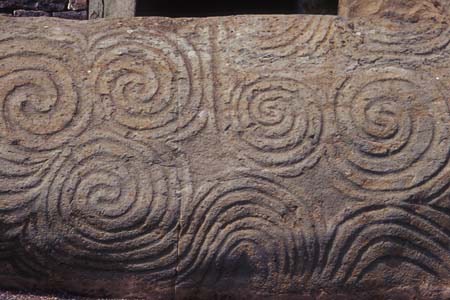by David Lewis-Williams and David Pearce
Did people in ancient times think the same way we think? It is a perennial question, one that I have studied for more than 20 years now. My ongoing results are presented in these book reviews as well as my History of Thinking hyperbook.
This book attempts to answer that question for the people of the Neolithic period, roughly 12,000 years ago to 5,000 years ago, although small hunter-gatherer groups living Neolithic life styles persist even today.
The authors have done an impressive job of gathering a vast mass of data to draw their conclusions. They rely heavily on what anthropologists have learned about hunter-gatherer groups in the Amazon, Siberia, Australia, and North America. But they supplement this with extensive analysis of archeaological sites in the Near East and in northwestern Europe.
Their basic thesis is that the Neolithic mind perceives the universe as a set of layers. The minimal set of layers comprises the underworld, which is the realm of the dead; the surface, which is the realm of the living; and the sky world, which is the realm of the gods. These concepts persist to modern times as the notions of heaven, hell, and earth.
Their second major element is the notion that the path between the layers takes the form of a tunnel with some sort of spirality to it and a bright light at its end. Again, this correlates well with reports of near-death experiences and speculations about how the brain shuts down.
The authors maintain that these beliefs are the inspiration for much of Neolithic art. They point to the huge number of spirals showing up on Neolithic monuments:

The problem with this argument is that spirals show up everywhere, in every age. Here are some examples:
The spiral motif is universal, but does that really tell us anything useful about the Neolithic mind? I think not.
The authors have no good explanation for the zigzag motif that also shows up everywhere:
Ultimately, I don’t buy their claims. This book is entirely too woo-woo for me. Sample quote:
“Being born and dying, the beginning and end of life on earth by transition between realms, both entail a passage through a ‘tunnel’ — the uterus and the vortex.”
There are also a number of oddities in the writing. They make quite a few references to Marx and Engels. What in the world do Marx and Engels have to do with the Neolithic mind?
Particularly bothersome is their frequent claims of support from neurophysiology — but they never actually present any such neurophysiology. They simply throw in that word whenever their argument gets thin.
Sigh. Another wasted book.
